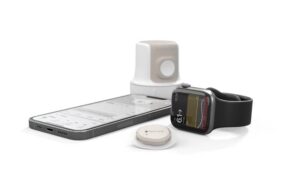
The San Diego-based company now offers Dexcom G7 in the UK, Ireland, Germany, Austria and Hong Kong. Availability covers people with diabetes aged two years and older. The launch marks the first major milestone in the availability of the continuous glucose monitor (CGM).
Dexcom intends to introduce the G7 in New Zealand and South Africa “in the weeks ahead,” according to a news release. It plans to release it in additional markets soon after.
“Since Dexcom G6 came to market, we’ve eliminated over 15 billion fingerpricks and helped improve the lives of more than 1.25 million people with diabetes around the world. We’re thrilled to begin the global rollout of Dexcom G7, our next-generation CGM technology, that vastly improves upon what everyone loves about G6,” said Kevin Sayer, chair, president and CEO of Dexcom. “Dexcom CGM has become the gold standard of care for diabetes, and bringing our technology to more and more people around the world continues to be a top priority.
“With this initial launch behind us, we look forward to introducing G7 in additional markets and bringing this life-changing technology to as many people as we can.”
Global launch a positive after Dexcom delays U.S. regulatory timeline for G7
Following a setback in its domestic efforts for G7, today’s news marks a real positive for Dexcom.
In July, Sayer said on the company’s second-quarter earnings call that the company had to apply software tweaks based on FDA feedback. This threw a wrench in the expected timelines for FDA 510(k) clearance and the subsequent U.S. launch.
“We expect FDA clearance and a limited launch later this year and a large commercial launch in the U.S. in the first quarter of 2023,” Sayer said.
Some suggested that G7 might receive FDA clearance following June’s American Diabetes Association Scientific Sessions. The company previously expressed confidence in a launch this year. However, with the changes to the software, the wait goes on.
The device won CE mark in March. Dexcom highlighted an updated sensor algorithm for G7 that received CE mark this quarter, making the latest G7 sensor technology available to international markets.
G7 has demonstrated exciting results in glucose monitoring in a number of recent clinical trials. One study highlights its accuracy, and another demonstrates strong performance in pediatric users.
The device features a 60% size reduction from the previous generation, the G6. It offers a 30-minute warmup period (down from waiting two hours for glucose readings to begin in the past).
G7 provides more information in one place with personalized insights, extended-wear design and more. It features a simple wear experience, starting with unscrewing a cap. The user then puts the sensor on their body and pushes a button. The device is then turned on and can be paired with a smartphone.
Kickoff event marks the launch
Dexcom introduced the highly anticipated device in a global streaming launch event. The event included a look at the making of the G7, plus first-hand accounts from device users around the world.
“There were so many times, especially when Ava was first diagnosed, that our lives had to fit around the disease, and not the other way around,” said Rebecca Ridgeway, mother of six-year-old Ava, a budding gymnast managing type 1 diabetes in the UK. “When we got Dexcom CGM, we felt like we’d finally been given a tool that gave us more control. It was life-changing for us when Ava started using Dexcom, and Dexcom G7 brings it to a whole new level.”
Alex Diener, senior director of global product design at Dexcom and someone who lives with type 1 diabetes, also took part in the launch event. He said Dexcom customers around the world contributed to the G7’s design process.
“We learned from people living with type 1 and type 2 diabetes, younger and older patients, and their caregivers, about the CGM features they need to allow them to focus more on their everyday lives and less on managing diabetes,” said Diener.

